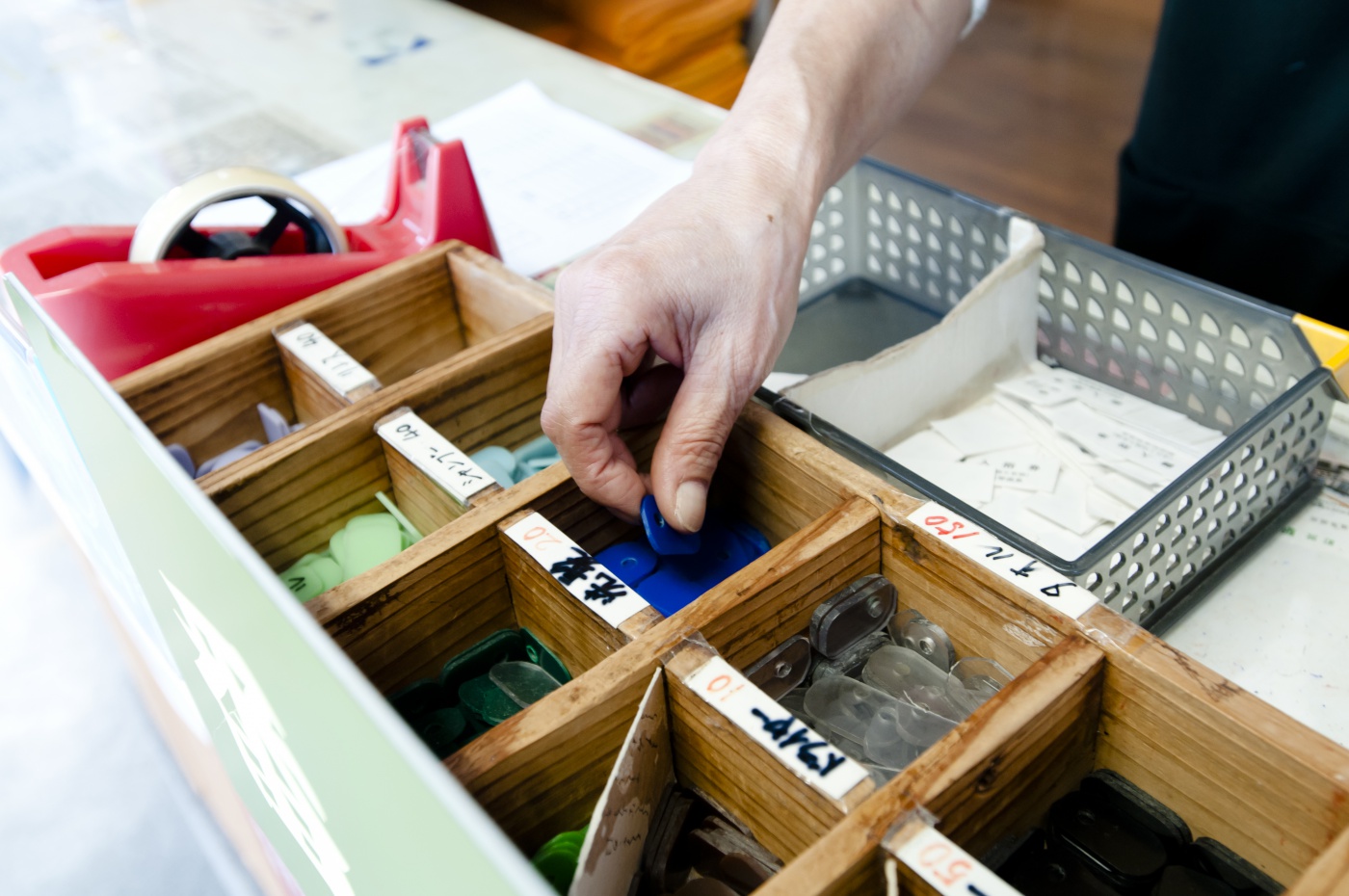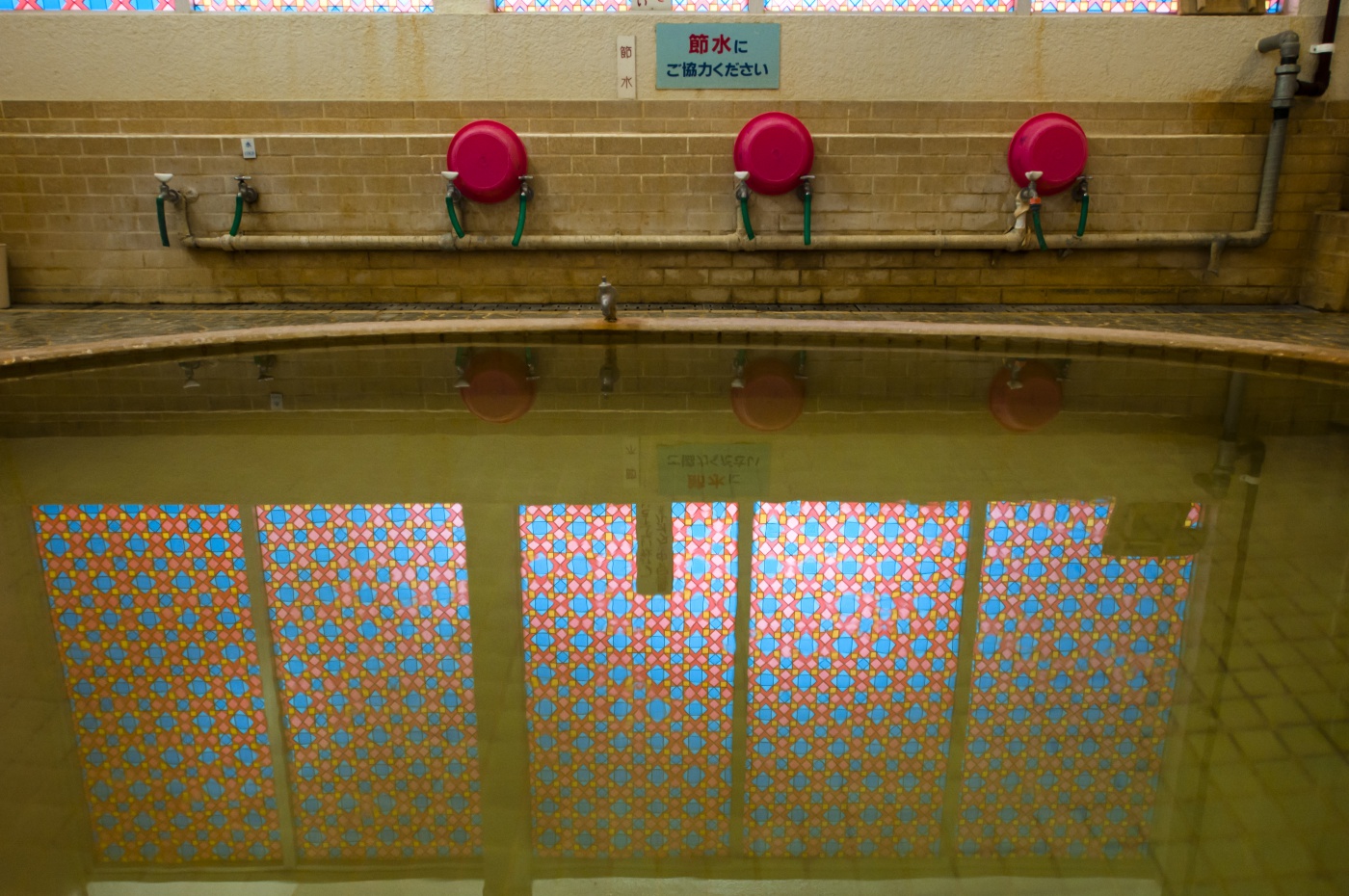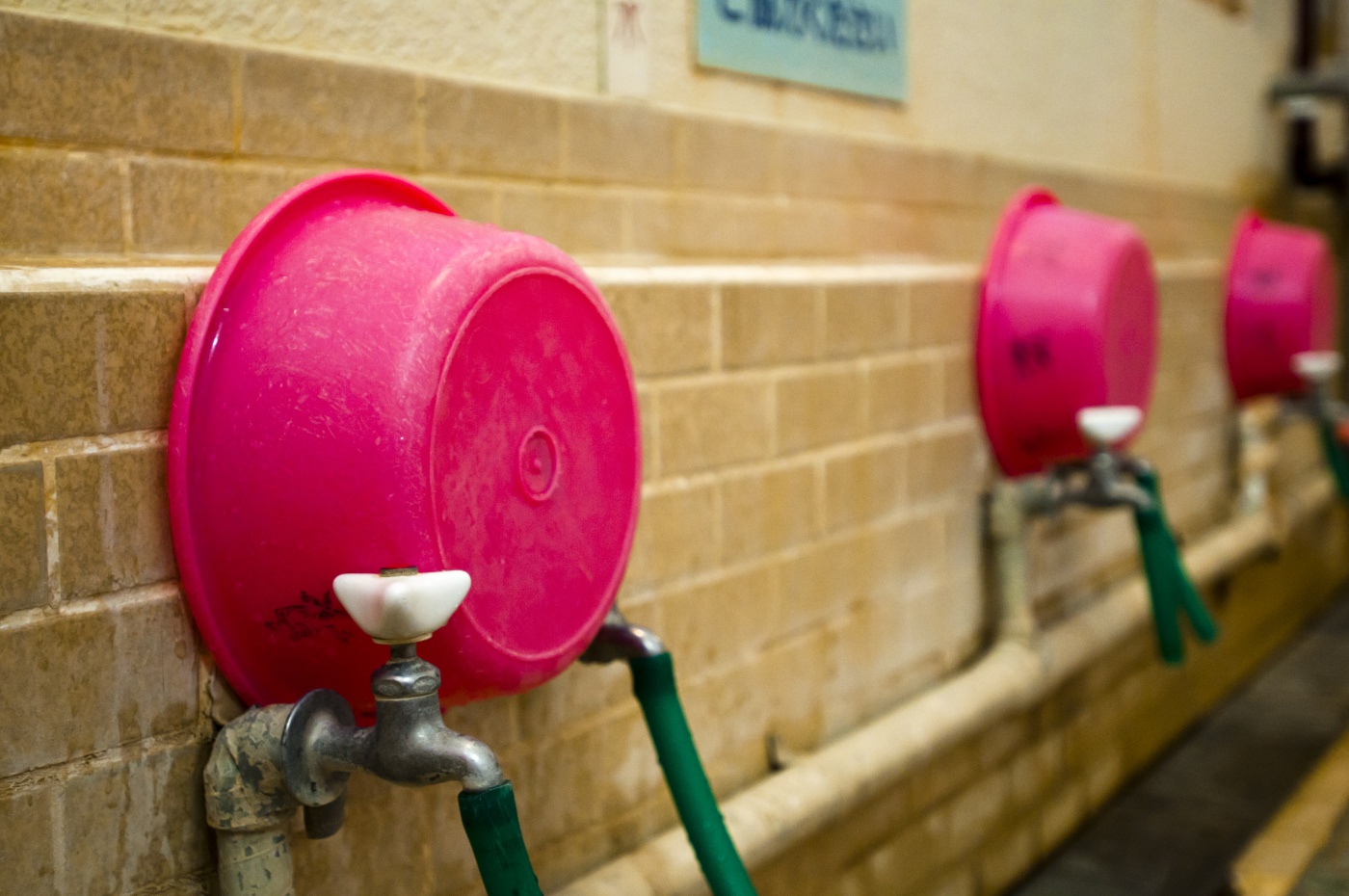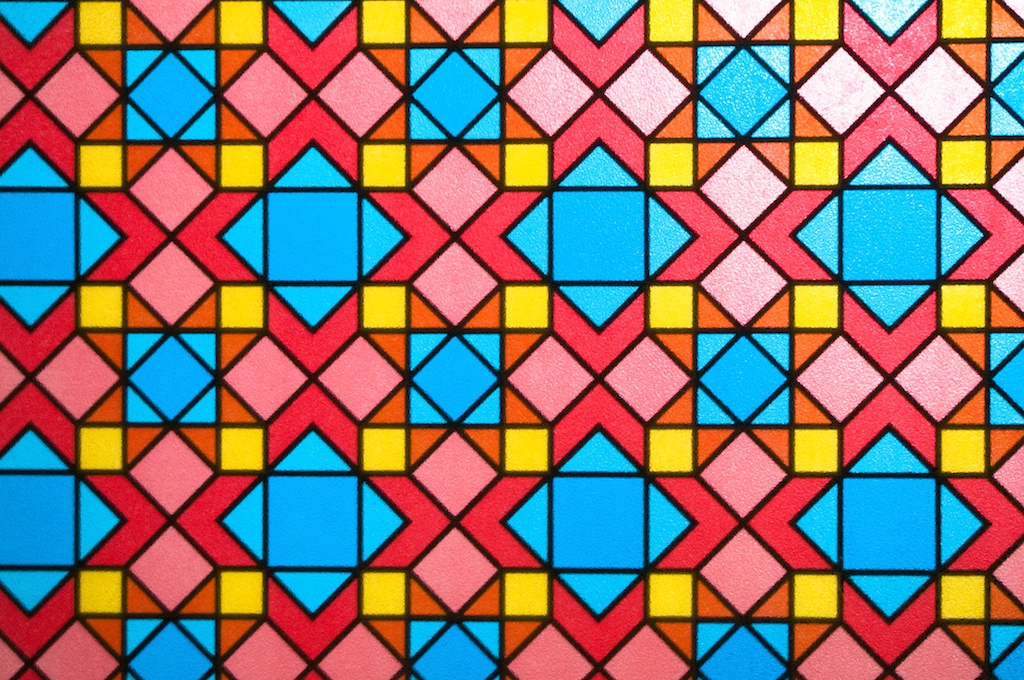Three minutes on foot from Beppu Station is a charming, Western style house with a steepled roof that stands out among a row of box-like buildings. With its white walls and green, pointed roof, I was stopped in my tracks by its romantic, Taisho era* beauty. On the right side of the building were the words “Ekimae Onsen”, and on the left side were “Kōtō Onsen”, or high-grade onsen*.
*The Taisho era is a period in Japanese history dating from July 30, 1912, to December 25, 1926.
*An onsen is a public hot spring.

I opened the glass sliding door to find that there were two entrances, one marked “high-grade bath” and the other “regular bath”. I was greeted by the onsen attendant who explained, “the high-grade bath has both hot water and warm water baths. The regular bath is bit hotter,” and asked, “are you okay with hot water?” After some consideration, I decided on the regular bath. Upon requesting a towel and soap, I received two small plastic chips. The chips, the onsen attendant explained, were used to calculate the bill at the end.

Passing through the noren*, before me was a pink bathing area. Sunlight filtered through a red, blue, pink, and amber stained glass window, filling the room with soft light. To acclimate my body to the temperature, I scooped a few bucketfuls of bath water on myself and washed up before getting in the bath. The relaxing sound of the bathwater echoed off of the high ceilings. Floating in the quietly rippling bath, my mind soon forgot that I was actually in the center of the city.
*A noren is a traditional Japanese fabric divider commonly hung between rooms or in doorways.

The bath was stained from nearly 100 years of contact with mineral-rich hot spring water. This onsen, originally called Yakushi Onsen, borrowed its name from Yakushi Nyorai, the medicine Buddha. The name was later changed to Kitamachi Onsen before finally settling on Ekimae Kōtō Onsen. At the time of its construction, the streets would have been lined with wooden buildings typical of the era, so this stylish, German architectural style building was the pride of the neighborhood. People old and young would come together to enjoy the hot water here. Kōtō, the part of its name that means “high-grade”, is proof of the pride locals take in this onsen.
Things to know when visiting Ekimae Kōtō Onsen:
1. Provided are stools and buckets; everything else you must bring yourself or rent from the onsen attendant.
2. Don’t pour water over yourself while standing so as not to splash.
3. The price for a shampoo is 20 yen.
4. Hot spring water flows into the bath from a spicket which is very hot. Please be careful.
5. If you aren’t comfortable with very hot water, we recommend trying the milder “high-grade bath”.
6. Please dry yourself off as much as possible before returning to the changing room so as not to drip water on the floor.
The onsen is something we all share, so please follow the rules and enjoy the baths politely.

I spoke to a woman who said she looks forward to coming to the onsen because she gets to chat with her friends. “If I have other plans and can’t come, I always call and let them know. People will get worried if I don’t show up,” she said. There is something healing about sharing a bath; it’s always more fun when everyone is together.
“How do you feel now?” asked the old man behind the counter, whom I learned is the manager. He’s also been a loyal customer of this onsen since the 1930s. He told me that when he was a boy there was nothing around here – just the onsen and a billiard hall. At that time there were still very few bath houses around, so many people would gather here to bathe. “Because of this onsen I have received many blessings. Kōtō Onsen is a treasure of this city. That’s why we must take care to preserve it,” said the manager. Perhaps one of the reasons he chooses to manage this onsen is a feeling of indebtedness. I’ll never forget the words he kept repeating: a treasure of this city. For nearly a century Ekimae Kōtō Onsen has been, and will continue to be, at the center of life in Beppu.
– Today’s Takeaways –
Learned the long and beautiful history of Ekimae Kōtō Onsen.
Heard the stories of an old man.
Got squeaky clean.

